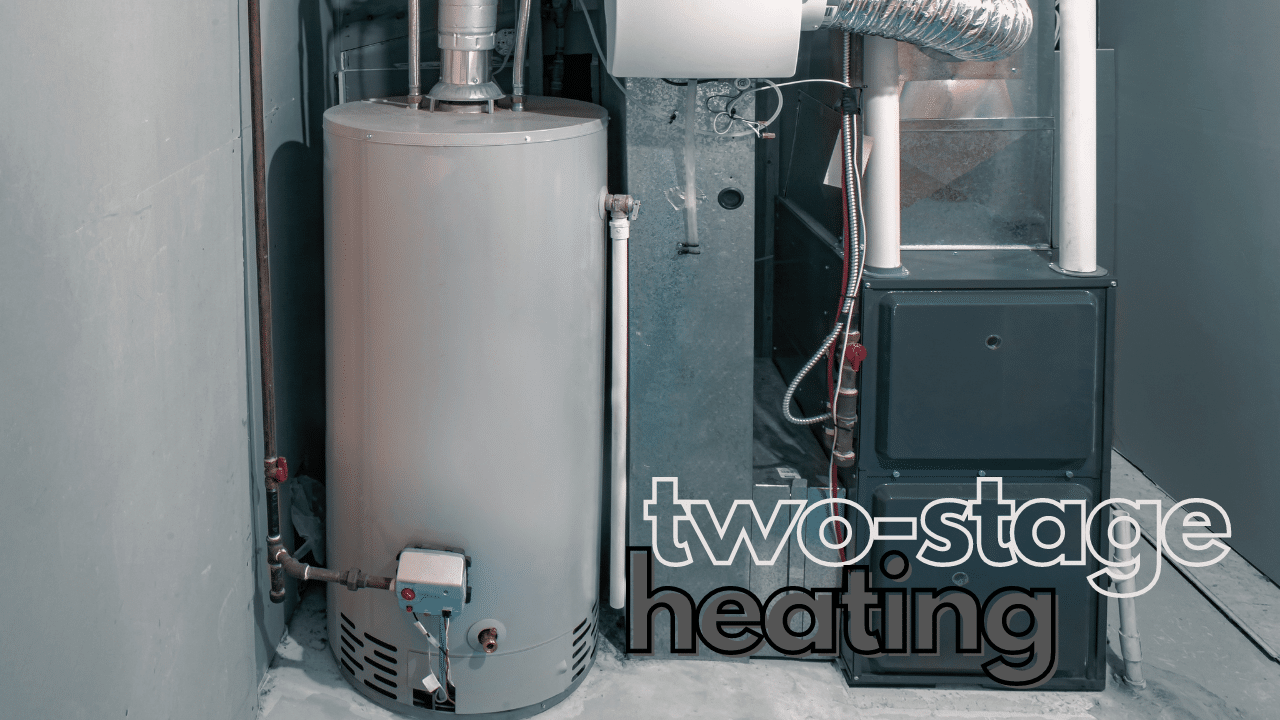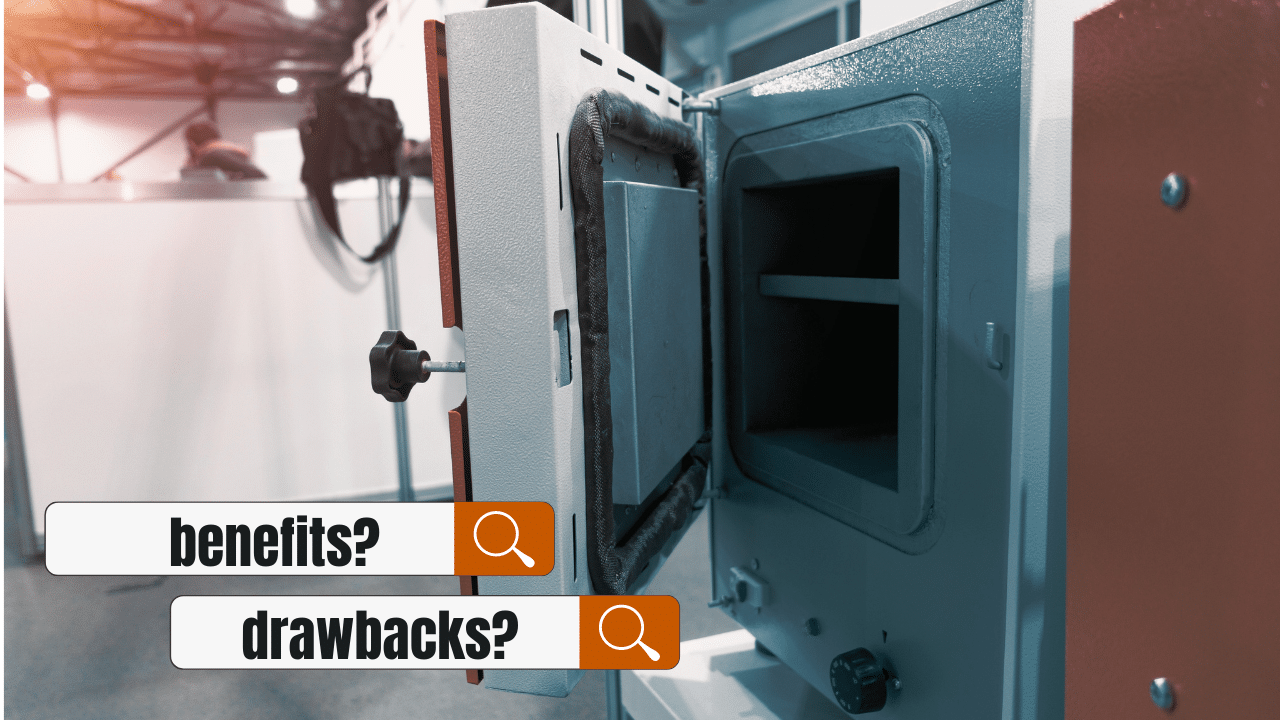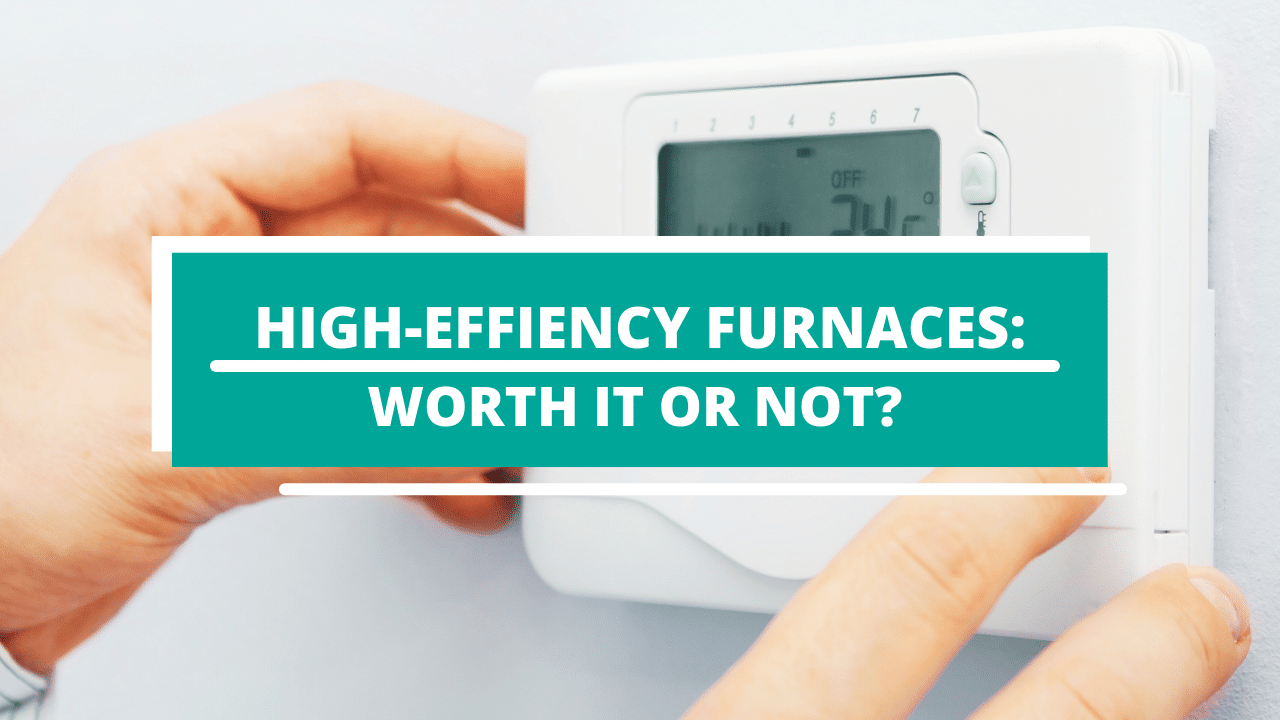The decision to purchase a furnace definitely shouldn't be taken lightly in any respect. You must have a professional HVAC contractor, installer, and of course, a good quality furnace. However, high-efficiency furnaces do cost a pretty penny, so the question that remains is, is it worth it to buy one of these?
Despite the large cost upfront, high-efficiency furnaces are usually worth the money. Not only do they save money each month on bills due to reduced energy usage, but they last longer and are ultimately safer for families due to the reduced risk of carbon monoxide toxicity.
It's okay if you still need a little bit of convincing; furnaces are expensive and should be bought with great care! Read on to learn more about the pros and cons of paying more money upfront for a high-quality furnace.
What are High-efficiency Furnaces?
High-efficiency means that the furnace will use less fuel, or energy, to heat the entire house. This is done by using sealed combustion (pulling air from outside the house) rather than open combustion (pulling air from around the furnace) to heat the house. These furnaces also don't use a pilot light to heat the house, so they are ultimately using less energy than other models that rely on that flame.
These furnaces usually appear in gas models. Gas models will usually help you to save money on power and gas bills in the long run. Gas furnaces tend to have a higher percentage of Annual Fuel Utilization Efficiency (AFUE) or, in other words, the ratio of heat output in comparison to the amount of fuel energy the furnace consumes. This is a much higher number than most other electric furnaces have and is therefore much more fuel-efficient.
Types of High-Efficiency Gas Furnaces
High-efficiency gas furnaces have been around much longer than any other type of high-efficiency furnace. The cost of gas is much lower than the cost of oil and it is regulated through public utility companies.
Single-Stage Heating
This type of heating means that there is one level of heating, 100% capacity, is activated at full blast whenever the furnace is turned on. When the thermostat meets the desired temperature, it will communicate to the furnace to turn off. It only has one level, high.
These furnaces come in 80% to 96% efficiency models.

Two-Stage Heating
This type of heating means that there are two different levels of heating capabilities depending on what the thermostat says, one around 65% capacity and then another at 100% capacity. For example, it may run on low for a while until the thermostat is boosted 10 degrees, triggering the more intense heating power.
These furnaces are more efficient than single-stage heating, but not by much.
Variable Capacity Heating
This type of heater uses increments of 1% capacity to heat the house instead of having two set levels. It ranges from 40% to 100% capacity, depending on what is needed for the temperature set.
This type of furnace can run anywhere from 96% to 99% efficiency.
The table below shows the Average Cost of High-Efficiency Gas Furnaces (100,000 BTU):
Furnace Type | Average Efficiency | Average Cost |
|---|---|---|
Single-stage | 92% | $1,250 |
Two-stage | 95% | $1,800 |
Variable | 97.5% | $2,650 |
Benefits and Drawbacks of High-efficiency Furnaces (Gas Furnaces)
Benefits:
Drawbacks:

Benefits and Drawbacks of Low-efficiency Furnaces (Electric Furnaces)
Benefits:
Drawbacks:

How to Fix Issues with your Furnace
Every furnace will need to be replaced at one time or another and that is simply an inescapable fact. Here are a few issues you may come face to face with if you are the owner of a furnace. There are also a few small repairs you could potentially undertake yourself, so make sure you inspect your furnace thoroughly before tearing it out and having a new one installed.
- 1Make sure nothing is blocking the flow of air from any of your vents. This could be anything from a piece of furniture to drapes or anything else. Make certain that each of your vents has a clear path to blow warm air, otherwise, things could most definitely go wrong.
- 2Check if your thermostat is being turned on to the right setting. Make sure it's on fan or auto and is set to heat. Once you have checked that, increase the temperature by a few degrees to see if it starts blowing air. If it doesn't, you may have another problem on your hands.
- 3Check the filter. A clogged and dirty filter will reduce your furnace's efficiency and prevent warm air from escaping and flowing evenly to the rest of your home. Cleaning may not be enough, so you will probably have to completely replace the air filter for optimal performance. This isn't too difficult because you can simply buy another one at most hardware stores.
- 4Make sure that your furnace is turned off during the summer months. This may mean going down to the furnace itself to make sure that everything is shut down. Without realizing it, your furnace may have been working during the summer months, along with the air conditioner. This simple check may save hundreds of dollars during the year.
- 5Make sure to go through windows, doorframes, and exterior walls to check for any kind of air leaks that could be causing the warm air to leak out in the winter. Seal any of these leaks as quickly as you can. They can be sealed quickly with caulk, which will create an airtight and watertight seal.
- 6Take the time to inspect and make any necessary repairs to your ductwork. If there are punctures anywhere throughout the system, this could stop warm air from making it to all the floors and corners of your house. You may end up having to replace a duct or two, but this will help you from spending any unnecessary money on heat!
- 7If the breaker switch is being flipped, run out to the breaker box and make sure everything is turned on and working properly. You don't want to call in the big guns if something as simple as this could be what's causing you some grief. It is also possible that a fuse has blown completely, and if that is the case, you should get that fixed right away. Hopefully, this means your furnace will still function properly afterward.
- 8Try resetting the blower motor. If it got overheated or experienced an overload, it may need to start again. You can look for a reset button which is usually located near the motor's housing. Push it and wait a few seconds to see if the blower kicks on. If it does not, wait for approximately thirty minutes to allow the motor some time to cool down. After that, you can try pushing the button again to see if it starts back up.
- 9If you are the owner of a gas-powered furnace, it is possible that the pilot light has gone out or the gas valve has been shut off. Run down to your basement and check to see if either of these things has happened. If so, you should relight the pilot and turn on the gas valve once more.
If none of these things seems to work for you, it is probably time to wave the white flag and call in a furnace repair technician. It's okay if you have tried everything else on your own. You should definitely not attempt any kind of big repairs or replacement on your own since this could lead to further problems.
Call in a technician and they will help you to determine whether you simply need a repair or if your furnace has run its course and needs to be replaced.

